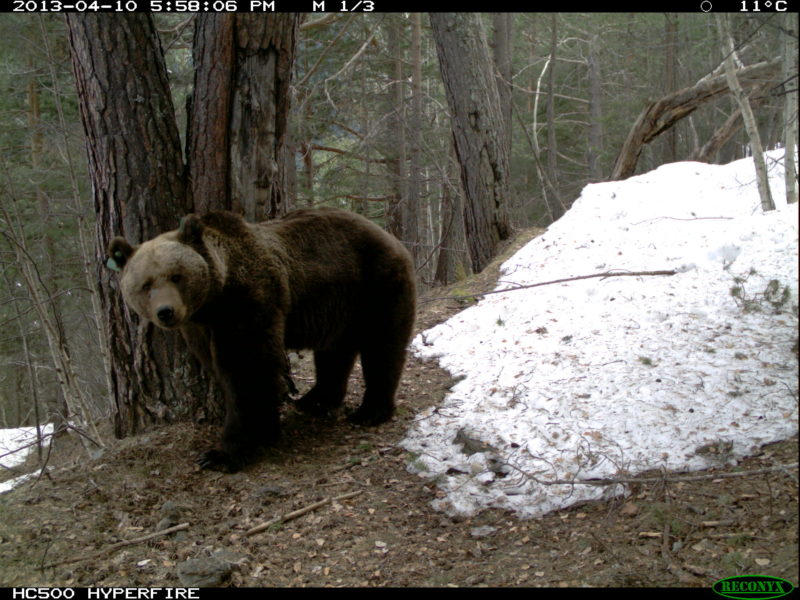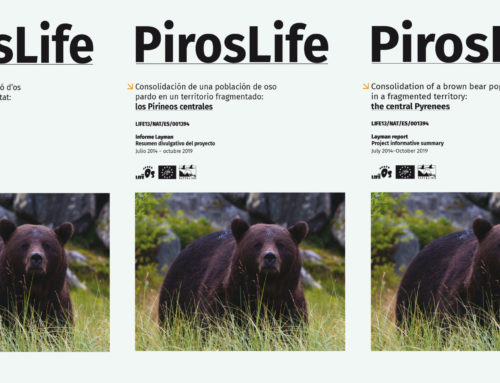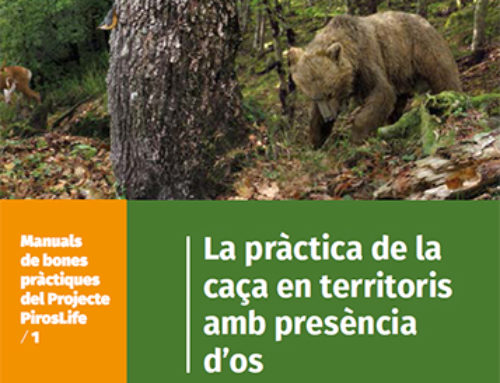- It will serve as a basis for the administrations involved in the management of the brown bear in the Pyrenees to act against atypical behaviours of certain individuals
The Protocol of intervention with bears in the Pyrenees is already approved. Powered by the Generalitat de Catalunya and the Conselh Generau d’Aran, the document was prepared by the Working Group of the Brown Bear in the Pyrenees (formed by technicians from the Ministry of Ecological Transition and the governments of Catalonia, Aran, Aragon and Navarra). Subsequently, it was subject to consultation of the administrations involved by the Ministry and has now been approved by the State Commission for Natural Heritage and Biodiversity.
The protocol will serve as a reference to the competent administrations for the management of fauna, in the decision-making against atypical behaviour of certain specimens of bear. Thus, the document is configured as the tool to prevent and solve quickly and efficiently, amongst others, cases of conflict between bears and humans. Therefore, it responds to the will to agree on an intervention strategy for possible problematic specimens.
In the preparation of the document, were taking into account other protocols adopted in several European populations, such as the Protocol of intervention on problematic bears of the French Pyrenees and the Protocol for the management of a situation with a bear with difficulties, prepared in 2009 and 2017, respectively, by the National Office of Chasse et de la Faune Sauvage (ONCFS ). Also, the Work Protocol of the emergency team for the bear in Greece prepared in 2009 by the NGO Callisto, in the Life Pindos/Grevena project; the Protocol for the management and prevention of the phenomenon of habituated and/or problematic bears in the Apennines, prepared in 2012 by the Abruzzo National Park, Lazio and Molise, within the project Life ‘Arctos’.
Definition and recommendations
The protocol defines three categories according to their behaviour: the habituated bear, the problematic bear (with three subcategories: conditioned by trophic resources of human origin, repeatedly predatory, and aggressive and dangerous) and bear with problems. It also defines and recommends the minimum requirements of the intervention teams that each community with competencies in the field of protected fauna must implement in the areas of stable presence of bear.
Distinguishes three phases of intervention: a first diagnosis, monitoring and execution of proactive measures and start of aversive measures (applying dissuasion techniques); a second capture and marking of the specimen (if not already, as in the case of Goiat, which already has a GPS necklace) and reinforcement of aversive measures; and, if the Working Group decides to move to the last phase because the behaviour does not improve, a third one that contemplates the capture and removal of the specimen. Finally, it details six intervention guidelines according to the different types of bear:
- in front of an accustomed bear
- in front of a bear conditioned by trophic resources of human origin
- in front of a repeatedly predatory bear
- in front of an aggressive and dangerous bear
- in front of a released and potentially conflicting bear
- in front of a bear with problems
The Protocol includes a specific section for released bears and potentially conflicting, allowing more flexibility when it comes to acting, taking into account the plus of responsibility of the administration in these cases. Thus, if this issue could jeopardize the viability of the consolidation program of the bear population as a whole, the Working Group will assess the convenience and possibility of removing the specimen.
The specific case of Goiat
With the antecedents of attacks found during 2017 and 2018 by the Goiat bear and in accordance with the definitions of this protocol, this specimen is considered as a repeatedly predatory bear. Therefore, following the procedure of intervention, during the next spring, coinciding with the end of the hibernation period, it is planned to strengthen the aversive measures to try to modify its behaviour and, based on the results obtained, after the evaluation of the Working Group of the Brown Bear in the Pyrenees, make the relevant decision in accordance with the provisions of the Protocol.
With the approval of this Protocol, there is a further step in the fulfilment of the roadmap that was marked by the Minister of Territory and Sustainability, Damià Calvet, last July, and which described the general director of Environmental Policies and Medi Natural, Ferran Miralles, at a press conference in September. At all times, the Generalitat has argued that Goiat has shown an atypical predatory behaviour this season; that no option is discarded, including capturing and extracting it from the environment; and that this decision, if any, will require a solid technical positioning and an intergovernmental consensus.







